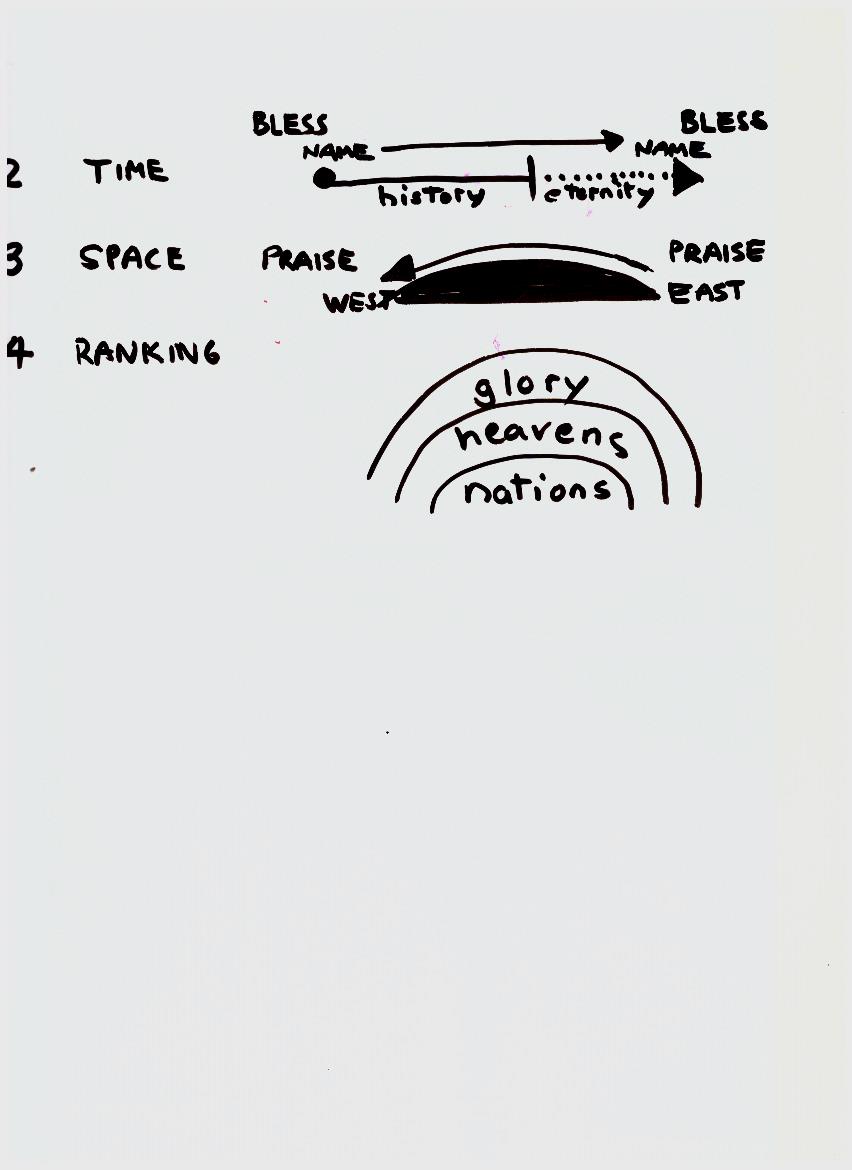
As one can see in
113:2-4, three aspects deserved attention to demonstrate how widespread the
worship of the Lord is: time, from history to eternity; space, from the east to
the west; ranking, beyond nations, heavens and above all glory. With whom can God be
compared? (113:5). He is the One on high
to dwell (113:5b). He is the One coming
down to see (113:6a) in heaven and upon the earth (113:6b). What is there for Him
to see? He is coming at the Second Coming to fetch His own as He has promised
when Jesus left in John 14:1-3. Unfinished business. Philosophical Deism that
God wound up the clock of this earth and then disappeared to let it run by
itself, has no place in this scenario. Sorry. Shelve that concept. It does’nt
work. “Who raises from the
dust (dal) lowly ones [dead]” (113:7a). It is the Resurrection that Daniel
12:1-2 is talking about. From dust to dust means created by God from dust and
returning to dust after death. To be raised (gimi) from the dust means
resurrection. “He lifts up the needy from a dunghill” (113:7b). Scholars
thought it refers to mourning practices or the place for lepers. It is the
poor/needy and after the Time of Trouble all will be poor since they had to ‘come
out of her My people’ (Revelation) and the Lord “scattered” them as we saw in
Psalm 112. Why did He raised them
from the dead at the Second Coming? “To dwell with princes, with princes of My
people” (113:8). Christ promised the remnant that they will be princes and
kings one day in eternity. Why? The CNN of heaven from other planets will take
us for appointments one by one to their planets where millions are waiting to
welcome us to tell our incredible salvation story, a narrative that they only
watched on “heavenly videos” but with us there they can see face to face. “Who dwells the barren
woman of the house, a mother of children joyous” (113:9). No kids? Wait a
minute, you have not seen the prophecies did you? Isaiah saw the Resurrection
scene in Isaiah 49:20-21 because parents and children will be reunited. Christ
will lift His hand to the nations and set up His standard to the peoples and
after the Resurrection took place, angels will “bring your sons in bosom”
(Isaiah 49:22d), and “your daughters will be carried on shoulders [of angels]”
(Isaiah 49:22e). Now watch this for those who did not have children: “Behold I
was left alone, from where did these come?” (Isaiah 49:21f). Ever thought I am
going to be alone in heaven? No longer please. Promise me that.
















